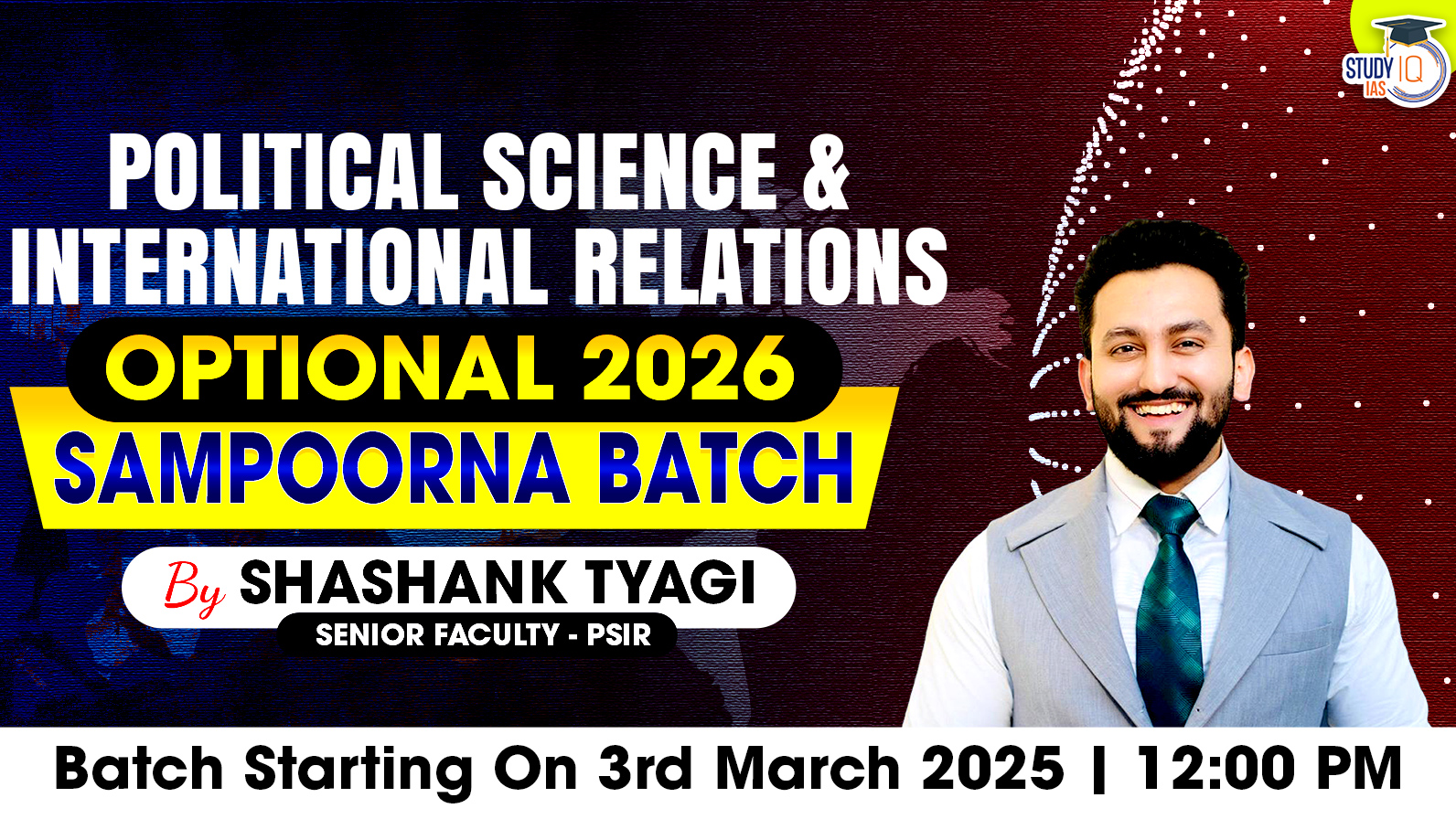Daily Current Affairs for UPSC 2023
Q) Which one of the following statements is not correct with reference to Poliomyelitis?
- It is a highly infectious bacterial disease
- It mainly affects nerves in the spinal cord
- It spreads mainly through the faecal-oral route
- It can be treated with a live attenuated oral vaccine
Daily Current Affairs for UPSC – 19 July April 2023
Explanation:
- Option (1) is incorrect: Poliomyelitis (polio) is a highly infectious viral disease that largely affects children under 5 years of age. There are three individual and immunologically distinct wild poliovirus strains. Symptomatically, all three strains are identical, in that they cause irreversible paralysis or even death.
- Option (2) is correct: It is caused by a virus belonging to the Picornaviridae family that mainly affects nerves in the spinal cord or brain stem. Global Polio Eradication Initiative is an initiative created in 1988 to eradicate the disease poliomyelitis. It is led by WHO.
- Option (3) is correct: The virus is transmitted by person-to-person spread mainly through the faecal-oral route or, less frequently, by a common vehicle (e.g. contaminated water or food) and multiplies in the intestine, from where it can invade the nervous system and cause paralysis.
- Option (4) is correct: Polio can be treated with the following vaccines:
- An inactivated (killed) polio vaccine (IPV)
- A live attenuated (weakened) oral polio vaccine (OPV)
Q) Consider the following statements about Atomic Bomb:
- It works on the phenomenon of nuclear fusion reactions.
- Plutonium-239 is a commonly used fissile material in atomic bombs.
- Conventional explosives are used to compress the fissile material into a supercritical mass in order to create an explosion in an atomic bomb.
How many of the statements given above are correct?
- Only one
- Only two
- All three
- None
Explanation:
- Statement 1 is incorrect: Atomic bombs, also known as fission bombs, are a type of nuclear weapon that derives its destructive force from nuclear fission reactions. Nuclear fission is a process in which the nucleus of a heavier atom splits into two or more smaller nuclei, along with the release of a significant amount of energy and the emission of neutrons.
- Statement 2 and 3 are correct: The core component of an atomic bomb is a fissile material, which is a substance capable of sustaining a nuclear fission chain reaction. The two commonly used fissile materials in atomic bombs are uranium-235 and plutonium-239. When an atomic bomb is detonated, conventional explosives are used to rapidly compress the fissile material into a supercritical mass. A supercritical mass refers to a quantity of fissile material that is large enough to sustain a chain reaction of nuclear fission. When the fissile material reaches this critical state, the atomic nuclei are split into smaller fragments, releasing a tremendous amount of energy in the form of an explosion. The energy release from an atomic bomb can be equivalent to the explosion of tens of thousands to hundreds of thousands of tons of conventional explosives.
Q) With reference to nursing workforce in Indian healthcare system, consider the following statements:
- As per the Health Ministry, there are no nursing colleges in nearly two-fifths of the districts in India.
- The northeastern states only have 2 percent of the total number of nursing colleges in India.
- More than 50 percent of the nursing workforce is currently being trained in just eight Indian states.
How many of the statements given above are correct?
- Only one
- Only two
- All three
- None
Explanation:
- Statement 1 is correct: According to the data from Health Ministry, there are no nursing colleges in 40 percent of districts across India. India currently has close to 35 lakh nurses, but its nurse-to-population ratio is only 2.06:1000 against a global benchmark of 3:1000. Though there has been a 36% growth in the number of institutions offering undergraduate nursing education since 2014-15, resulting in a 40% growth in nursing seats, there is a regional skew within these statistics.
- Statement 2 is correct: About 64% of the nursing workforce is currently trained in just eight States. 42% of nursing institutions are concentrated in Andhra Pradesh, Karnataka, Kerala, Tamil Nadu, and Telangana, while 17% are in the western States of Rajasthan, Gujarat, and Maharashtra.
- Statement 3 is correct: Only 2% of nursing colleges are in the northeastern States. The growth of nursing colleges also lags far behind the 81% growth rate of medical colleges, with the number of undergraduate and postgraduate medical seats surging at 110% and 114%, respectively, since 2014-15.
Q) Consider the following statements about Henley Passport Index 2023:
- The index is based on data from the International Air Transport Association.
- India’s ranking has improved by seven positions in the new rankings.
- Syria is ranked last on the index and has the weakest passport in the world.
How many of the statements given above are correct?
- Only one
- Only two
- All three
- None
Explanation:
- Statement 1 is correct: The Henley Passport Index is the original, authoritative ranking of all the world’s passports according to the number of destinations their holders can access without a prior visa. The index is based on exclusive data from the International Air Transport Association (IATA), the largest, most accurate travel information database.
- Statement 2 is correct: The latest ranking published by Henley Passport Index has put India’s passport at the 80th spot, moving it up seven places from its position in 2022. India is currently ranked 80th on the index along with Togo and Senegal, with visa-free access to 57 countries. India was ranked 87th in 2022.
- Statement 3 is incorrect: Afghanistanremains at the bottom of the Henley Passport Index, with a visa-free access score of just 27, followed by Iraq (score of 29), and Syria (score of 30), the three weakest passports in the world.
Q) Recently seen in news, the ‘Bal Mitra Police’ Program was launched by which one of the following Indian state/Union Territory?
- Kerala
- Puducherry
- New Delhi
- Maharashtra
Explanation:
- Option (3) is correct: Bal Mitra Police is a community-based policing program in Delhi, India. It was launched in 2001 by the Delhi Police in partnership with the National Commission for Protection of Child Rights (NCPCR). The program aims to build a partnership between the police and children, and to prevent crime and violence against children. Bal Mitra Police units are set up in schools and other community settings. They are staffed by police officers who have been specially trained to work with children. The units provide a range of services, including:
- Crime prevention education
- Mediation and conflict resolution
- Support for victims of crime
- Referral to other services


 RPSC RAS Prelims Result 2025 Out at rpsc...
RPSC RAS Prelims Result 2025 Out at rpsc...
 India’s First Biannual Transparency Re...
India’s First Biannual Transparency Re...





















